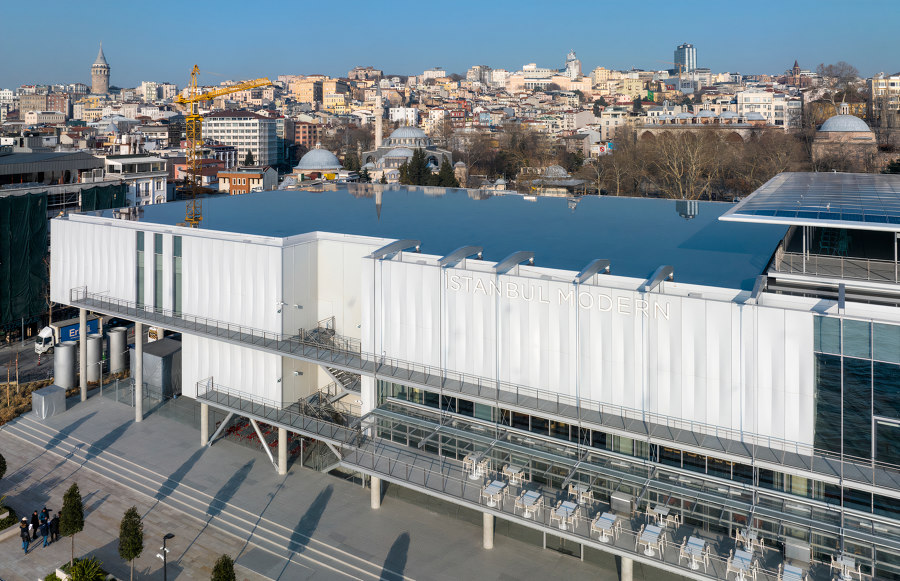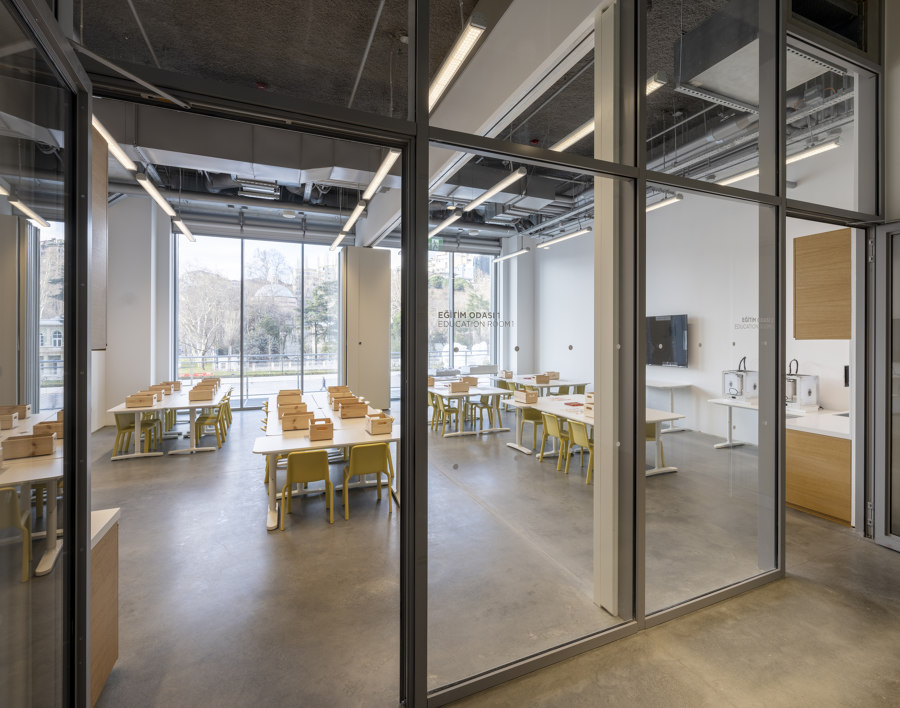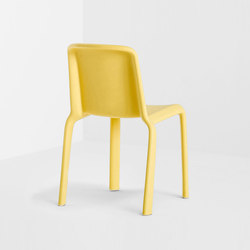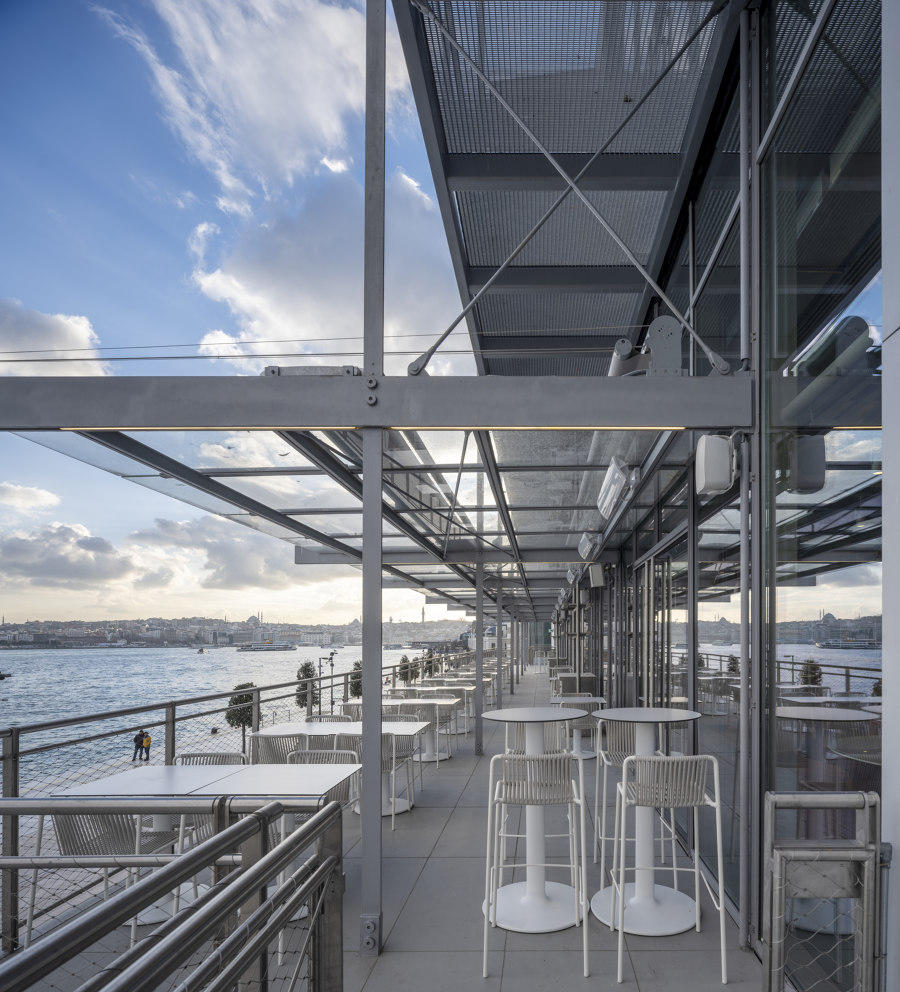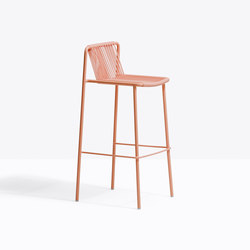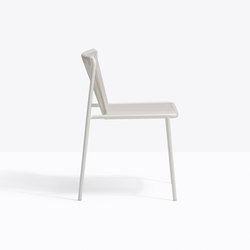Weaving ties between furniture, architecture and the city: Pedrali in Istanbul
Storia del Marchio di Simon Keane-Cowell
MORNICO AL SERIO (BG), Italia
21.03.24
Renzo Piano's Istanbul Modern Museum becomes part of the city by embodying urban integration, combining architecture, design and Pedrali furniture to foster interconnections on a human scale.
On Istanbul Modern’s pavilion-like terrace, with its awe-inspiring views of the water, the architects have chosen Pedrali’s Nolita seating family, authored by dynamic design trio CMP Design. Photo: Cemal Emden
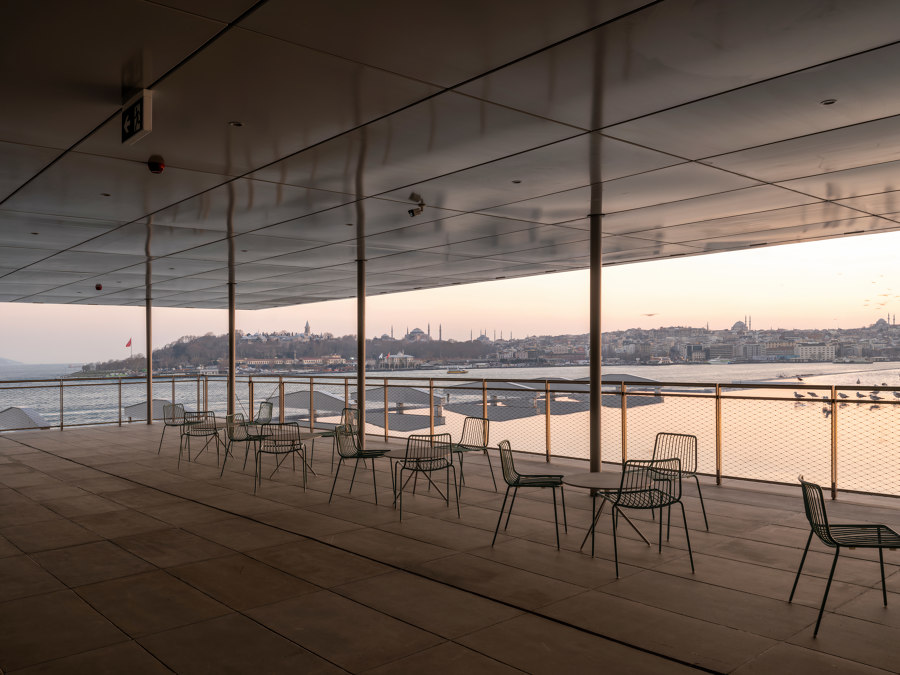
On Istanbul Modern’s pavilion-like terrace, with its awe-inspiring views of the water, the architects have chosen Pedrali’s Nolita seating family, authored by dynamic design trio CMP Design. Photo: Cemal Emden
×Crossroads is the metaphor that’s often used to describe Istanbul, with its supreme intersectionality: its strategic location (the city famously straddles the Bosphorous river, connecting Europe and Asia) is attended by layers of social, cultural and religious shifts. But it’s not only a hub of history. With a population of over 15 million, Istanbul (formerly Constantinople, and, before that, Byzantium) has for millennia been, and continues to be, a major node for the exchange of goods, ideas and people.
Already attracting an international visitorship, Renzo Piano Building Workshop's recent Istanbul Modern project celebrates the idea of intersections. Photo: Cemal Emden
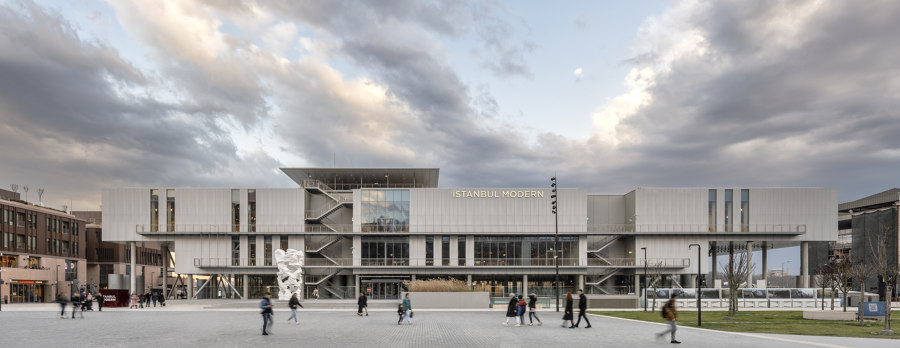
Already attracting an international visitorship, Renzo Piano Building Workshop's recent Istanbul Modern project celebrates the idea of intersections. Photo: Cemal Emden
×A building that opens to connect
Renzo Piano Building Workshop’s recent Istanbul Modern project – which is already attracting an international visitorship – celebrates the idea of intersections. Located in the city’s Beyoğlu district, with the old town to the west, the Bosphorus to the south, Tophane Park to the north and the new Galataport waterside development to the east, Turkey’s first museum dedicated to modern and contemporary art lies at the intersection of these various areas, providing a new urban landmark and a social and cultural destination.
RPBW's Istanbul Modern Museum lies at the intersection of various areas, providing a new urban landmark and a social and cultural destination
Good architecture is always (also) about context. Buildings should never be stand-alone sculptures. The RPWB team, in collaboration with Arup, have responded to the overarching master plan that is regenerating over 1.5 kilometres of the city’s quayside with a horizontally articulated, semi-transparent structure that connects land with water, allowing as its glazed ground-floor lobby does uninterrupted sight lines between the waterfront and the park at the rear of the museum.
The overarching master plan is regenerating over 1.5 kilometres of the city’s quayside with a horizontally articulated, semi-transparent structure that connects land with water. Photos: Cemal Emden (above), Enrico Cano (below)
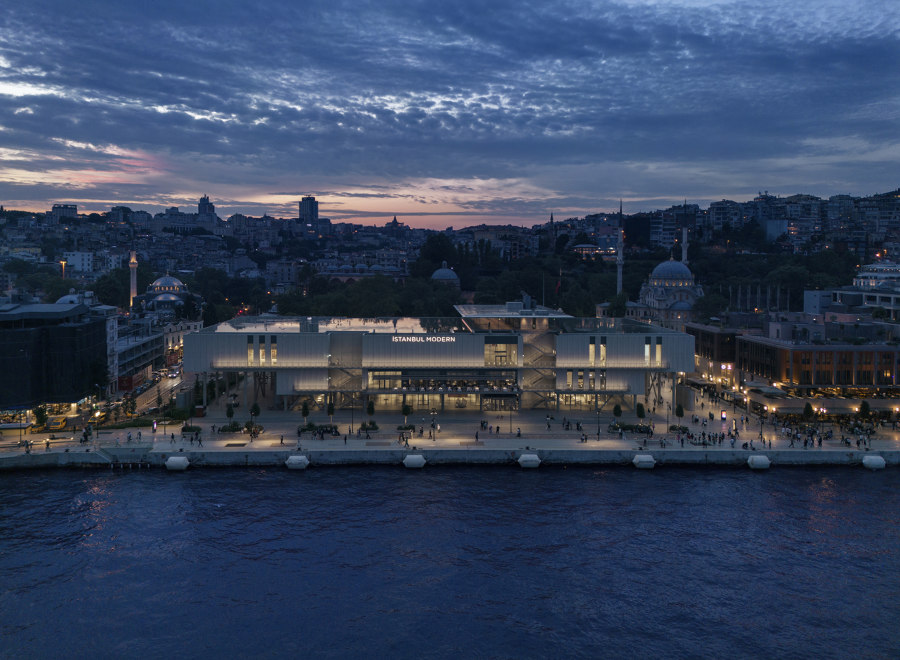
The overarching master plan is regenerating over 1.5 kilometres of the city’s quayside with a horizontally articulated, semi-transparent structure that connects land with water. Photos: Cemal Emden (above), Enrico Cano (below)
×Visitors entering Istanbul Modern via a series of ramps and steps that serve to anchor the building to its site can expect over 15,000 square metres of exhibition and cultural space, organised over five floors (two of which are below ground level) connected by a grand central staircase.
Empowering interconnections with the right furniture
Design isn’t art, and rightly so, but it’s fitting that furniture by Pedrali – the 100% Made-in-Italy company that’s turned the marriage of innovation-driven industrial production with an ultra-high level of material consideration and craftsmanship into an artform – should have been selected for some of the museum’s spaces, namely an educational workshop room and the 650-square-metre panoramic terrace.
Design isn’t art, and rightly so, but it’s fitting that furniture by Pedrali should have been selected for some of the museum’s spaces
In the former, Snow Junior, designed by Odo Fioravanti, provides a playful and flexible seating solution for younger visitors within an educational room dedicated to them. Specified in a bright and optimistic yellow, the chair is a polypropylene monobloc – a mini-sculpture, if you will – that’s injection-molded using gas-air-molding technology, meaning that while it’s solid and sturdy, it’s also lightweight – which comes in useful when you’re stacking it to open up the space. It also provides a delightful chromatic and textural contrast with the polished concrete floors.
Snow Junior provides a playful and flexible seating solution for younger visitors within an educational room dedicated to them. Photo: Cemal Emden (above)
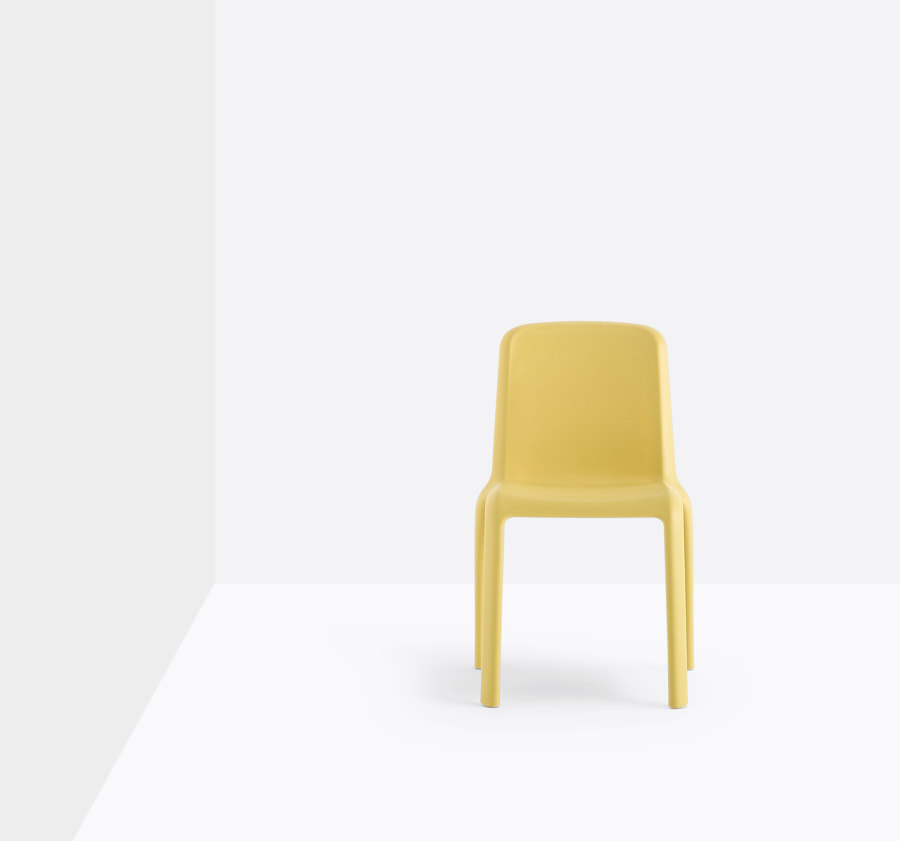
Snow Junior provides a playful and flexible seating solution for younger visitors within an educational room dedicated to them. Photo: Cemal Emden (above)
×Up on Istanbul Modern’s pavilion-like terrace meanwhile, with its awe-inspiring views of the water, the architects have chosen Pedrali’s Nolita and Tribeca seating families, both authored by dynamic design trio CMP Design. They speak a common language: one of levity, transparency and the collective, popular design imagination. While Nolita is made of powder-coated steel, Tribeca features a backrest and seat made of woven extruded PVC with a nylon core.
Nolita and Tribeca speak a common language: one of levity, transparency and the collective, popular design imagination. Photo: Cemal Emden (above)
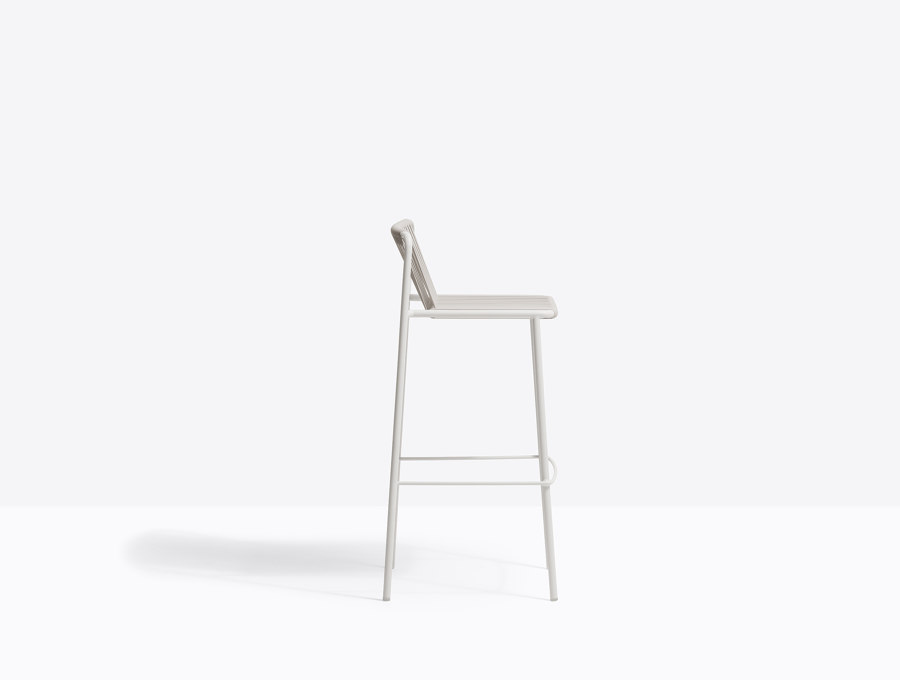
Nolita and Tribeca speak a common language: one of levity, transparency and the collective, popular design imagination. Photo: Cemal Emden (above)
×Both make a virtue of the drawing-like linearity that goes to make up their forms. Colour plays an active role here, too, with blue and white selected to mirror the watery landscape. At the same time, Fluxo tables by Luca Casini, with their expressive stem-like bases, complete the considered ensemble.
Furniture, architecture, city. In Istanbul, it’s all connected.
© Architonic
Head to the Architonic Magazine for more insights on the latest products, trends and practices in architecture and design.




